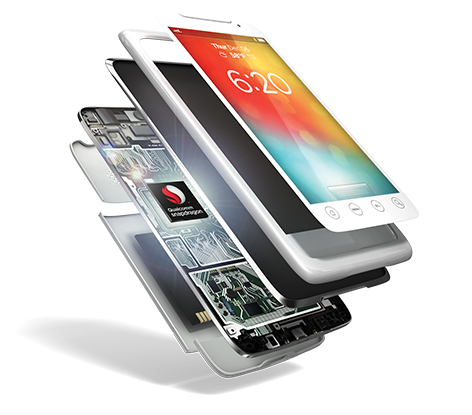
(Image Source: http://www.cnet.com/news/can-the-iphone-6-replace-your-gaming-handheld/)
The days of the slowly moving pixelated snake on a tiny Nokia cellphone are long gone and have been replaced with Snapdragon processor-run games. Due to the emergence of groundbreaking innovation like powerful graphics processing units, as well as the integration of internet in mobile devices, leaps and bounds have been made in mobile gaming and graphics technology.
It’s important to understand that just a couple of decades ago, games were solely played on traditional gaming consoles or computers and not on phones or tablets. Smart phones did not exist and tablets most definitely were not available to the general public. The progression towards mobilizing society has led to the massive rise of network-equipped gadgets, which has indirectly pushed the development in modern graphics processing units (GPUs). This technology has evolved gaming and allowed it to become a mobile experience.

(Image Source: http://www.qualcomm.eu/snapdragon)
Snapdragon’s GPUs, made by Qualcomm, have been integral to changing the face of mobile gaming and overall consumer expectation. These processors provide ultra high-definition graphics and are capable of producing realistic 3D scenes and effects. Furthermore, the technology enables smooth connection to the internet allowing users to connect with other gamers, participate in social media components that are now often woven into the game schema and continue to upgrade and purchase the latest versions from publishers. Speed, connectivity and superior graphics are becoming the norm thanks to Qualcomm’s advanced technology that is being built into the top Android-based devices in the market. It’s fueling the mobile gaming industry’s growth.
Along side super strong GPUs, a new API (application programming interface), is on the way to changing the game. Metal, by Apple, will soon replace the industry-standard 3D-graphics API, Open GL, which currently sits between game software and processor. The new Metal API framework offers exponentially quicker rendering efficiency and is still in its initial stages of entering the scene – owners of iPhone 5s or later can currently experience a handful of games that truly showcase the stunning and rich visuals and seamless functionality.
Video game publishers have been adapting their strategy to match the fast pace of technological developments on the backend of mobile visuals. Producers have invested heavily in mobile games by launching classic console game staples across mobile devices. The competitive landscape in gaming has also become more diverse – mobile gaming has created a platform for lesser-known developers to come out with a variety of different games and place them in app stores for anyone and everyone to buy. Because the playing field in terms of graphics has leveled out between console and mobile, the audience has moreover expanded to various demographics. Complex gaming doesn’t just mean Modern Combat; it also means games such as Candy Crush – bright, visuals with social media as a huge part of the game.
The shift has been made from Nintendo 64 to the latest lightweight, AMOLED-screen tab and now, innovative gaming and graphics technology is being developed with mobile in mind. Advancements in processing units and internal structures within mobile devices give consumers the chance to experience accurate, quick moves, sharp immersive sounds and spectacular graphics that come with mobile games, simple and complicated alike. Mobile players are left wanting more, and so long as there is demand, graphic tech development will continue to game on.
Sources:
http://www.wired.com/2013/01/how-mobile-kills-the-console-but-advances-the-gaming-industry/
https://www.esoftload.info/advancements-mobile-gaming-industry
https://www.qualcomm.com/products/snapdragon/processors
http://www.cnet.com/news/apple-supercharges-ios-gaming-with-metal/
About the Author
Jessica Oaks is a freelance journalist who loves to cover technology news and the way that technology can make life easier. She is also an editor at www.freshlytechy.com. Follow her on Twitter @TechyJessy.



